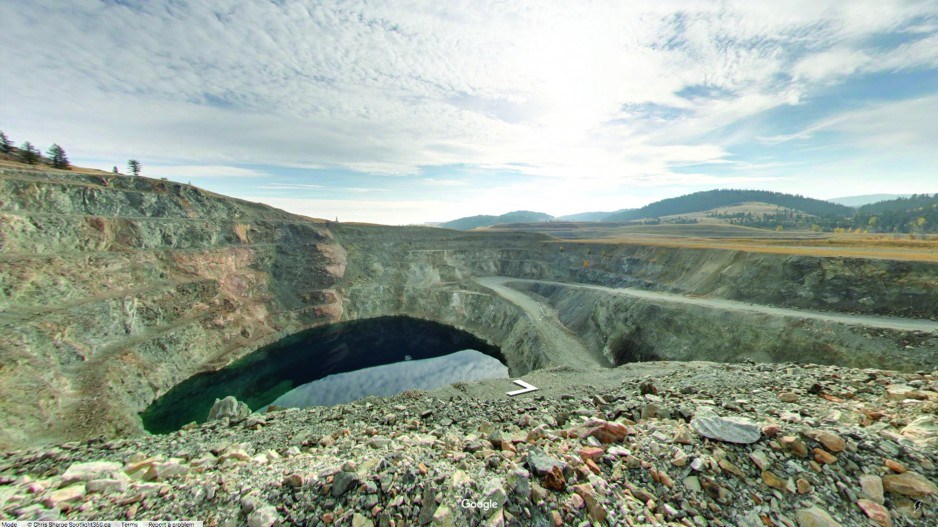“I’m not against mining, but…”
That line from a recent letter to the editor in Kamloops This Week pretty much sums up the tone of discussion around the Ajax copper-gold mine – a discussion that has been going on in Kamloops since 2011.
It’s a discussion that promises to get more heated in the coming weeks, now that the mine project is in the public comment period of a joint provincial-federal environmental review.
According to KGHM International Ltd., the Polish company that would develop the mine, Ajax would cost $1 billion to build, create 1,800 short-term jobs over a two-and-a-half-year construction period and 500 permanent jobs once the mine is in operation, and generate an annual payroll of $60 million.
KGHM also offered a benefits agreement in which the City of Kamloops and a number of non-profit organizations would receive $100 million over 25 years.
Kamloops city council basically said “no thanks” to that offer in July, when council formally voted 5-1 to oppose the mine.
Arjun Singh, the city’s deputy mayor, said Kamloops is largely pro-mining, but he’s against the Ajax mine, and so are many residents there.
“We’re not against mining,” he told Business in Vancouver. “We like it, generally speaking, in Kamloops. [Ajax has], because of its proximity,… always been a very, very controversial project.
“Lots of folks think that if you’re against Ajax – which has been the biggest issue in town for a number years – then you’re against all mining, or you’re against all industry, and nothing could be further from the truth.
“The concern around Ajax stems from its proximity to the community.”
The open-pit mine would operate just two kilometres from some people’s homes.
Initially, there were concerns about the mine’s proposed tailings pond – worries that were heightened in the wake of the Mount Polley tailings pond collapse.
Those concerns were allayed somewhat after the city hired a consultant to examine the risks.
“The city’s own consultant that we hired to do a big assessment of the application, they were actually pretty happy with the tailings pond proposal,” Singh said. “I’ve got some members of council that feel differently. They aren’t very pleased with it.”
Singh said the biggest concern is dust from the mine and its potential impact on air quality.
Coun. Patricia Wallace, the only councillor to vote against a motion to oppose the project, said she supports the mine, so long as it passes an environmental review.
Kamloops is a mining town. The New Afton copper mine west of Kamloops and Highland Valley copper mine to the southwest are significant employers, providing local jobs and supporting a number of mining service companies.
Gauging the general public’s opinion for the Ajax project can be tough, Wallace said, because the mine’s critics tend to dominate the discussion.
“There are a few people from the university, some doctors and some environmentalists that tend to speak for everyone, in every issue,” Wallace said.
“The anti-Ajax people, they’re highly organized, with a lot of money.”
According to Abacus Mining & Exploration Corp. (TSX-V:AME), the Vancouver exploration company that acquired the Ajax claims in 2002 and holds a 20% stake in the project, the mine would have a capital cost of $1 billion.
The Ajax deposit has 426 million tonnes in proven and probable reserves, with an estimated 2.7 billion pounds of copper, 2.6 million ounces of gold and 5.3 million ounces of silver. The mine would process up to 65,000 tonnes of ore per day and would have a life of 23 years. That’s provided copper prices, which are slowly moving up, stay high enough to sustain operations. As the mine’s history shows, it has operated in fits and starts, according to copper prices, since the 1920s.
Although the mine lies just outside Kamloops city limits, the company would require permits from the city and regional district.
Last month, after five public consultation periods between 2011 and 2017, the Canadian Environmental Assessment Agency (CEAA) and the British Columbia Environmental Assessment Office (EAO) jointly issued a 459-page Ajax mine report.
The Stk’emlupsemc Te Secwepemc Nation (Kamloops Indian Band) produced its own review, which the CEAA and EAO considered as part of their review.
The two agencies concluded that the most significant adverse effects of the mine would be on First Nations heritage and traditional practices, not on human health or the environment.
The deadline for written submissions during the public review period of the project is October 10.




